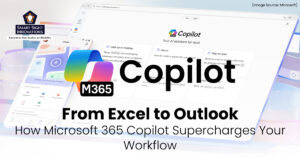 What Is an API?
What Is an API?
An application programming interface (API) is a set of principles and procedures to create and integrate an application software. APIs enable communication between your product or service and other products and services without requiring you to understand how they are built, making app development simpler and saving time and money. It can be done by utilizing API standards like REST and SOAP, which provide protocols or sets of rules that the client (the party making the call) and server (the person fulfilling the client’s requests) must adhere to. These standards are critical for communication and specify the format of a request and the format in which a client should anticipate receiving a response from a server.
Every API makes its endpoints (also known as entry points) available so that clients can utilize them to access API capabilities. For instance, JavaScript presents a Document as an entry point to work with numerous functions and the document object model (DOM). It empowers its client to use it to manage the DOM. However, in JavaScript, we utilize containers, which are HyperText Markup Language (HTML) controls that can access APIs and show the result inside that control.
What is JavaScript?
JavaScript is a programming language that enables you to implement complex and advanced functions on web pages. JavaScript frameworks are considered as the best when it comes to mobile app development — especially Android apps. They are a collection of JavaScript code libraries that allow web developers to use pre-written code in their development.
Whenever a web page displays anything other than static information such as timely content updates, interactive maps, animated 2D/3D visuals and scrolling video jukeboxes you can expect that JavaScript is probably being used. It can update and change both HTML and CSS. It has the ability to handle, manipulate and validate data.
JavaScript is capable of doing almost all server-side operations, including responding to client requests, establishing connections to databases and handling database connections. The functions derived from the client-side JavaScript language are remarkable. Using APIs provides your JavaScript code access to additional abilities.
API-Driven Development in JavaScript and Its Benefits?
API-driven development involves developing and constructing APIs first and then building the rest of the application around them. API-driven development is different from conventional development strategies. They are pre-built collections of coding components that enable developers to create programs that would otherwise be challenging or impossible to create. Developers get to work on standardized and organized APIs that retain their core function regardless of the underlying technology or components.
Since JavaScript is a multi-purpose language, it can be used on servers, phones and even browsers. For each platform it supports, it uses a different set of APIs. It also offers a comprehensive selection of controls and other capabilities, such as client storage, that are all easily accessed by JavaScript. Below are some benefits of API-driven development.
1. Browser APIs in JavaScript
Browsers use JavaScript to display online pages, manage user interactions, send server requests and get responses. The browser APIs offered to carry out browser-related tasks are:
- Working with DOM
DOM is the structure that stores all HTML controls on a web page. In addition to holding, it also allows you to add and remove controls from it.
- Ask the server for data
JavaScript is often used to streamline websites by updating just a portion of a page rather than loading the whole thing. For instance, when you like a post on Facebook, only that particular post is updated and does not reload the entire website. JavaScript thus uses the AJAX (Asynchronous JavaScript and XML) API to perform partial calls to the server.
- Store data with the client
Though your databases operate without a hitch on servers, you might still want to save certain data on the client’s browsers to improve efficiency. In this scenario, APIs provided by JavaScript like localStorage and sessionStorage help in keeping the data on the client’s browser and discard it whenever you want.
LocalStorage allows you to keep data that remains accessible even after the browser or tab is closed. While the data in sessionStorage is cleared as soon as the browser or tab is closed. Depending on your requirement you may either use localStorage or sessionStorage.
- Work with graphics
Numerous well-known applications allow users to generate 2D or 3D graphics by interacting with the software. JavaScript offers the perfect API which is the canvas API, that can be used to edit pixels on a web page to create 2D and 3D pictures.
2. Third-party APIs
It can be difficult to integrate with other programs whose structures we don’t completely understand. However, JavaScript enables us to connect with numerous well-known third-party applications like Twitter, YouTube and Facebook. For instance, if your company wants to tweet from its Twitter account, JavaScript helps with the Twitter API, a third-party API, by which you can include a variety of other well-known apps into your web page including Twitter.
3. Web Audio APIs
JavaScript’s Audio API creates simple audio controls on a website providing various audio playback options and online audio effects. The Web Audio API offers several interfaces that cover functions for audio processing, audio destinations, combining audio channels and visualization effects.
4. Geolocation API
Many web applications benefit from user location data. For instance, if you are browsing for eateries in your area, having location data helps Google provide more accurate results. Due to privacy considerations, it is at the user’s discretion whether they wish to publish their location or not. Nevertheless, if they want, the geolocation API gives users’ locations to web applications.
5. History API
If you want to allow users to navigate back and forth across a web application, you can utilize the history API. The three possible ways for running the history API with window variables are: go, back and forward.














